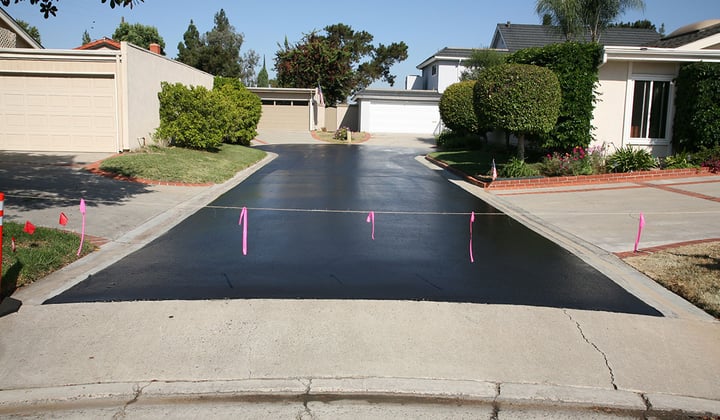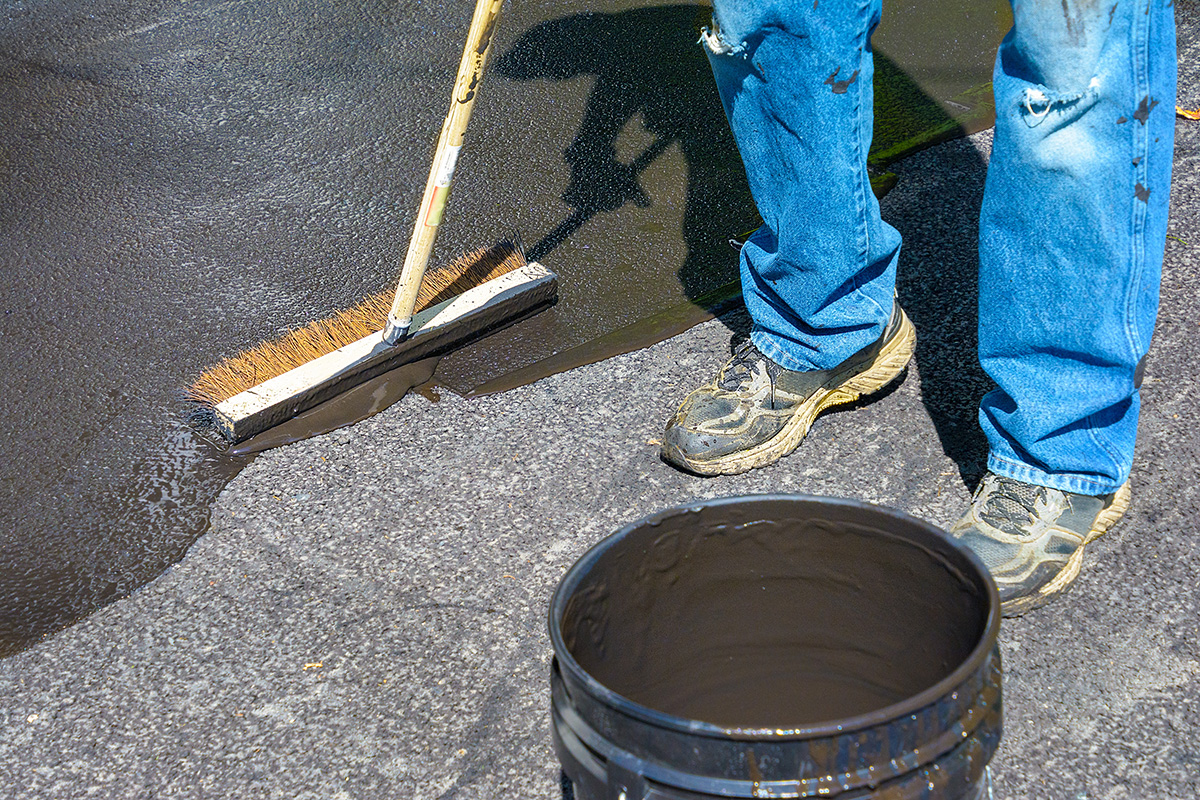Boost Sidewalk Efficiency: Cold Mix Asphalt Sealing Methods
Boost Sidewalk Efficiency: Cold Mix Asphalt Sealing Methods
Blog Article
Cold Mix Asphalt Vs. Hot Mix Asphalt: Which Is Right for You?

Make-up Differences
Cold mix and warm mix asphalts differ substantially in their composition, with distinct characteristics that influence their efficiency and applications. Cold mix asphalt is produced by emulsifying the asphalt binder with water and an emulsifying agent before mixing it with accumulation. This approach enables the asphalt to be workable at lower temperature levels, making it ideal for momentary repairs and for usage in colder climate condition. Hot mix asphalt, on the various other hand, is made at high temperatures, usually in between 300-350 ° F, which helps to attain far better compaction and an extra durable last product. The hot mix asphalt manufacturing procedure entails warming the aggregate and asphalt binder individually before integrating them at the asphalt plant.
Furthermore, cool mix asphalt often tends to be much less thick and extra adaptable than warm mix asphalt. This adaptability makes it better suited for locations with greater degrees of motion, such as driveways or roadways with hefty web traffic. In contrast, hot mix asphalt is known for its high toughness and resistance to rutting and splitting, making it a favored option for freeways and high-traffic roadways where durability is important.
Setup Process Variances
The process of mounting cool mix and warm mix asphalt exhibits remarkable differences in their treatments and requirements. Cold mix asphalt, being a much more flexible product, can be used straight from the bag or container onto the crater or harmed area. It calls for marginal preparation job, such as cleaning up the location and condensing the cold mix with hand tools. This makes it a practical choice for short-lived and quick solutions. On the other hand, warm mix asphalt demands a more intricate setup procedure. It includes warming the blend to heats before laying it down on an appropriately prepared base. The preparation consists of compacting the base, using a tack layer, and using heavy machinery like pavers and compactors for a long lasting and smooth finish. As a result of the heating demands, warm mix asphalt setups are commonly executed by experts with specialized equipment, making certain a much more structurally sound and irreversible outcome.
Durability and Longevity Aspects
When taking into consideration asphalt options, resilience and longevity are vital variables to evaluate for lasting pavement performance. Hot mix asphalt (HMA) is known for its extraordinary toughness and durability. The high temperature levels throughout the laying and mixing process permit better compaction, resulting in a read the full info here denser and more powerful sidewalk structure. This brings about HMA being more immune to rush hour tons, severe weather, and the effects of maturing contrasted to cold mix asphalt (CMA)
In terms of longevity, HMA typically outmatches CMA because of its superior toughness and resistance residential or commercial properties. HMA sidewalks have a longer service life, requiring much less regular repairs and upkeep, which can translate to set you back financial savings in the lengthy run. Additionally, HMA sidewalks are more quickly customizable to satisfy specific job needs, even more improving their longevity.
Expense Considerations
Considering the monetary implications is a vital facet when reviewing the selection between hot mix asphalt (HMA) and cold mix asphalt (CMA) for sidewalk tasks. While the preliminary price of warm mix asphalt is commonly greater than that of chilly mix asphalt, HMA frequently supplies a much more affordable service in the long run due to its remarkable longevity and long life.
In addition to product prices, it's necessary to consider the costs associated with setup and upkeep when comparing HMA and CMA. Eventually, the choice between HMA and CMA need to take into account not just the first cost however additionally the long-term economic implications to figure out the most cost-efficient choice for the specific sidewalk job.
Environmental Effect Contrast
Comparison of the environmental influences between warm mix asphalt (HMA) and chilly mix asphalt (CMA) reveals unique distinctions in sustainability methods. HMA production needs high temperature levels, causing enhanced power usage and greenhouse gas discharges. The procedure additionally launches unpredictable natural compounds (VOCs) and hazardous air pollutants (HAPs) into the ambience. On the other hand, CMA is generated and applied at lower temperature levels, reducing energy usage and emissions considerably. The reduced production temperature levels of CMA cause decreased gas intake and lower levels of CO2 discharges, making it a much more eco-friendly option.
Additionally, using CMA commonly involves recycling existing asphalt pavement, advertising source preservation and reducing the amount of waste sent out to garbage dumps. This recycling aspect further boosts the sustainability of CMA contrasted to HMA. Generally, when considering the ecological effect, CMA becomes a more eco lasting selection because of its reduced power requirements, minimized discharges, and the potential for reusing existing materials. By going with CMA over HMA, roadway building and construction tasks can add favorably to environmental conservation initiatives.
Final Thought
To conclude, the choice between cool mix asphalt (CMA) and hot mix asphalt (HMA) depends upon different factors such as make-up, installment procedure, sturdiness, durability, expense, and environmental influence. angle parking. While CMA supplies a fast and cost-efficient option for minor repairs, HMA makes sure premium durability and longevity for rush hour locations. Consider these elements meticulously to establish which kind of asphalt is the right selection for your paving requires

Considering the monetary ramifications is an essential facet when examining the option in between hot mix asphalt (HMA) and cold mix asphalt (CMA) for sidewalk projects. While the preliminary cost of warm mix asphalt is usually higher than that of cold mix asphalt, HMA usually gives a more economical solution in the long run due to its premium durability and long life. asphalt repair.Contrast of the ecological influences in between warm mix asphalt (HMA) and cold mix asphalt (CMA) exposes unique distinctions in sustainability methods.In final read more thought, the selection in between cold mix asphalt (CMA) and warm mix asphalt (HMA) depends on numerous aspects such as make-up, installment procedure, longevity, longevity, cost, and environmental effect
Report this page